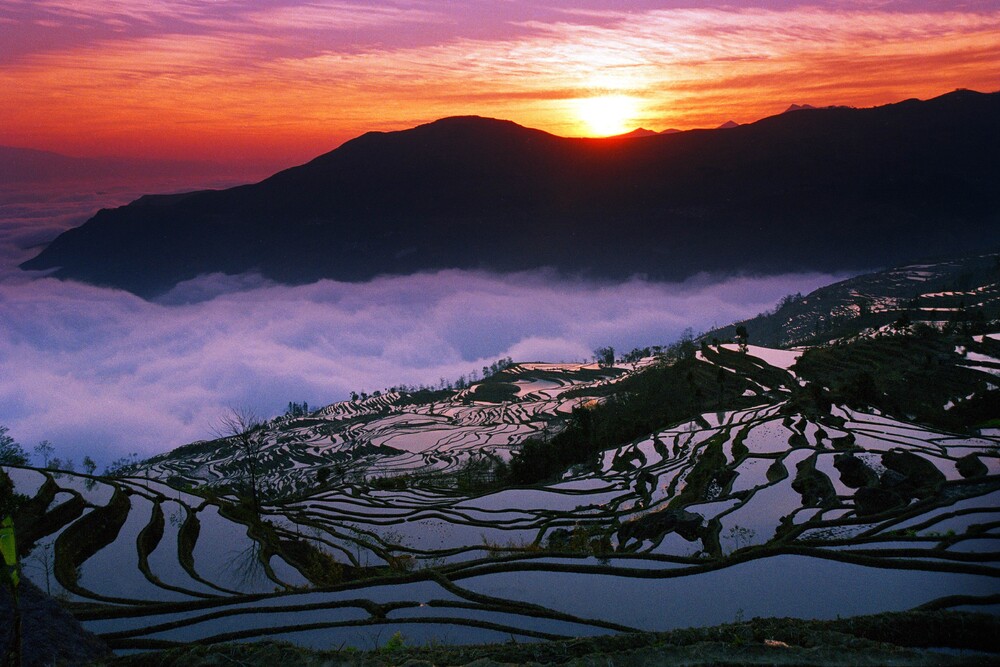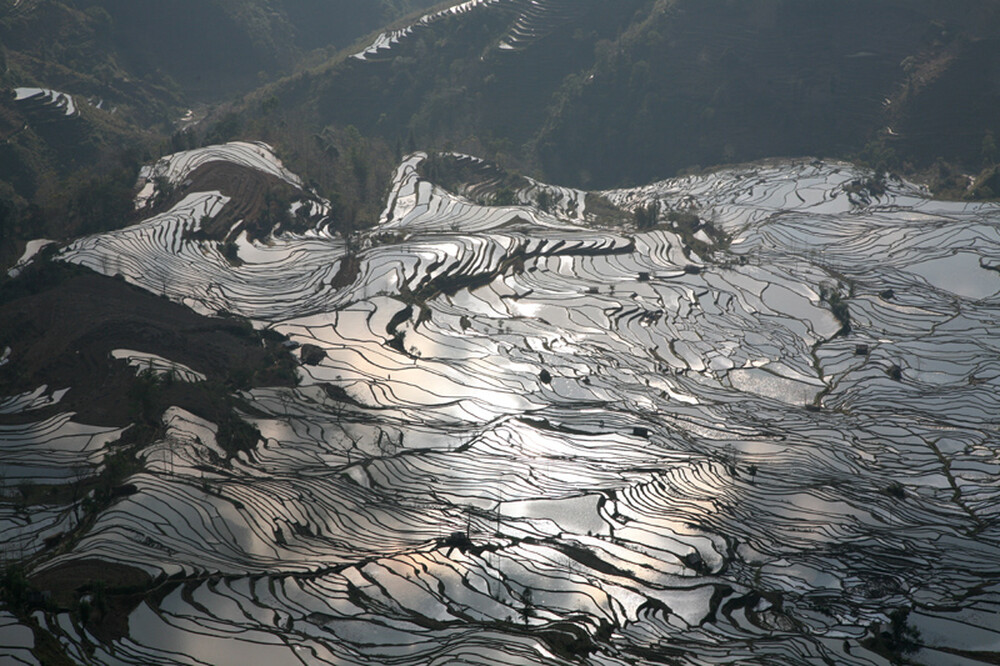Cultural Landscape of Honghe Hani Rice Terraces

The Cultural Landscape of Honghe Hani Rice Terraces, China covers 16,603-hectares in Southern Yunnan. It is marked by spectacular terraces that cascade down the slopes of the towering Ailao Mountains to the banks of the Hong River. Over the past 1,300 years, the Hani people have developed a complex system of channels to bring water from the forested mountaintops to the terraces. They have also created an integrated farming system that involves buffalos, cattle, ducks, fish and eel and supports the production of red rice, the area’s primary crop. The inhabitants worship the sun, moon, mountains, rivers, forests and other natural phenomena including fire. They live in 82 villages situated between the mountaintop forests and the terraces. The villages feature traditional thatched “mushroom” houses. The resilient land management system of the rice terraces demonstrates extraordinary harmony between people and their environment, both visually and ecologically, based on exceptional and long-standing social and religious structures.
On the south banks of the Hong River in the mountainous terrain of southern Yunnan, the Honghe Hani Rice terraces cascade down the towering slopes of the Ailao mountains. Carved out of dense forest over the past 1,300 years by Hani people who migrated here from further to the north-west, the irrigated terraces support paddy fields overlooking narrow valleys. In some places there are as many as 3,000 terraces between the lower edges of the forest and the valley floor.
Responding to the difficulties and opportunities of their environment of high mountains, narrow valleys criss-crossed by ravines, extremely high rainfall (around 1400mm) and sub-tropical valley climate, the Hani people have created out of dense forest an extraordinarily complex system of irrigated rice terraces that flows around the contours of the mountains.
The property extends across an area of some 1,000 square kilometres. Three areas of terraces, Bada, Duoyishu and Laohuzui, within three river basins, Malizhai, Dawazhe and Amengkong-Geta, reflect differing underlying geological characteristics. The gradient of the terraces in Bada is gentle, in Douyishu steeper, and in Laohuzui very steep.

The landscape reflects an integrated four-fold system of forests, water supply, terraces and houses. The mountain top forests are the lifeblood of the terraces in capturing and sustaining the water needed for the irrigation. There are four types of forests, the ancient ‘water recharge’ forest, sacred forest, consolidation forests, and village forests for the provision of timber for building, food and firewood. The sacred forests still have strong connotations. Above the village are places for the Village God “Angma” (the soul of the village) and for the Land Protection God “Misong”, where villagers pray for peace, health and prosperity.
Clefts in the rocks channel the rain, and sandstone beneath the granite mountains traps the water and then later releases it as springs. A complex system of channels has been developed to spread this water around the terraces in and between different valleys. Four trunk canals and 392 branch ditches which in length total 445.83km are maintained communally.
Eighty-two relatively small villages with between 50 and 100 households are constructed above the terraces just below the mountain top forests. The traditional vernacular buildings have walls built of rammed earth, of adobe bricks or of earth and stone under a tall, hipped, roof thatched with straw that gives the houses a distinctive ‘mushroom’ shape. At least half the houses in the villages are mainly or partly of traditional materials.

Each household farms one or two ‘plots’ of the rice terraces. Red rice is produced on the basis of a complex and integrated farming and breeding system involving buffalos, cattle, ducks, fish and eels. This system is under pinned by long-standing traditional social and religious structures, based on symbiotic relationships between plants and animals that reinforce communal obligations and the sacredness of nature and reflect a duality of approach between the individual and the community, and between people and gods, one reinforcing the other.
The Honghe Hani rice terraces are an exceptional reflection of a resilient land management system that optimises social and environmental resources, demonstrates an extraordinary harmony between people and their environment in spiritual, ecological and visual terms, and is based on a spiritual respect for nature and respect for both the individual and the community, through a system of dual interdependence known as the ‘Man-God Unity social system’.